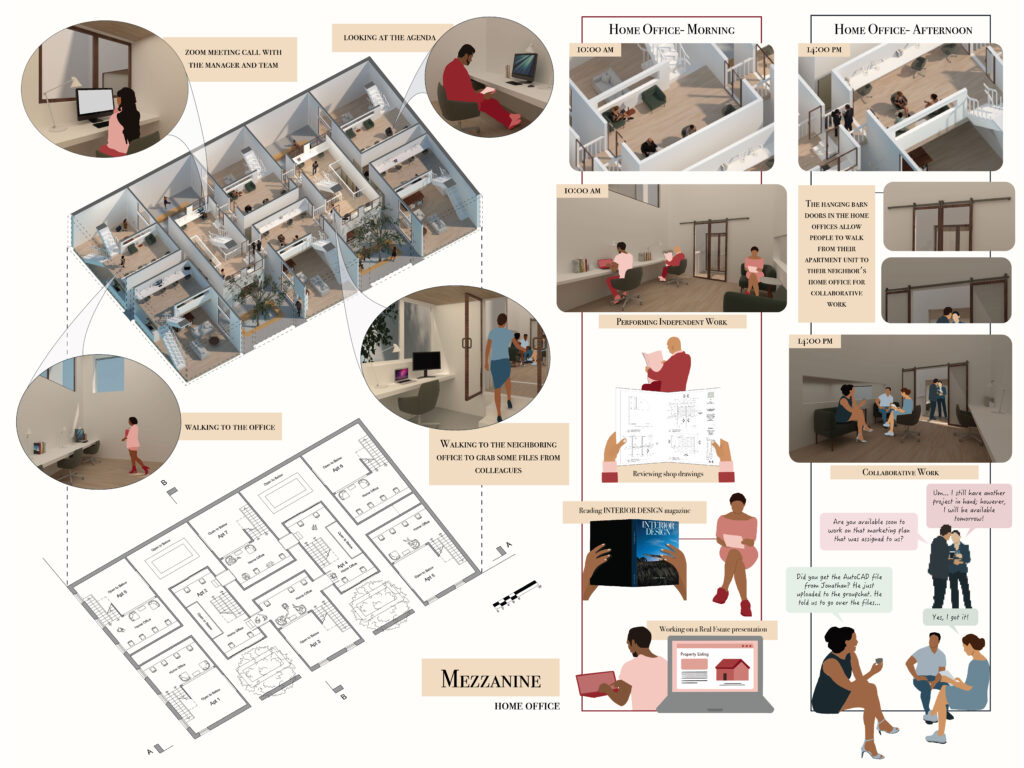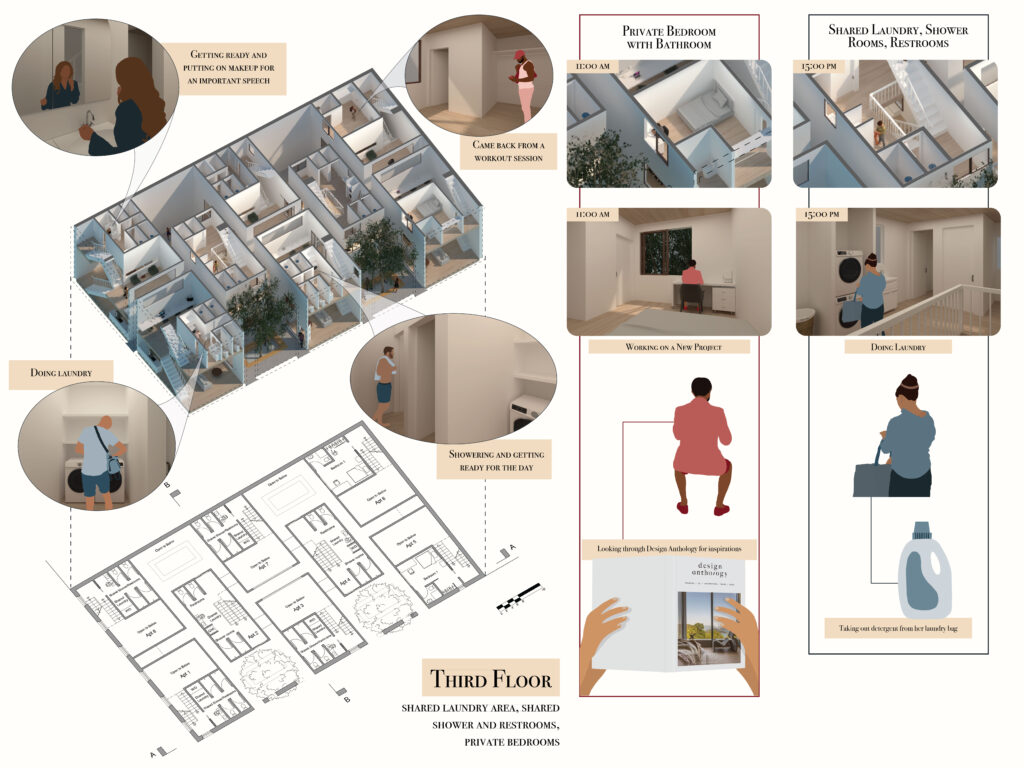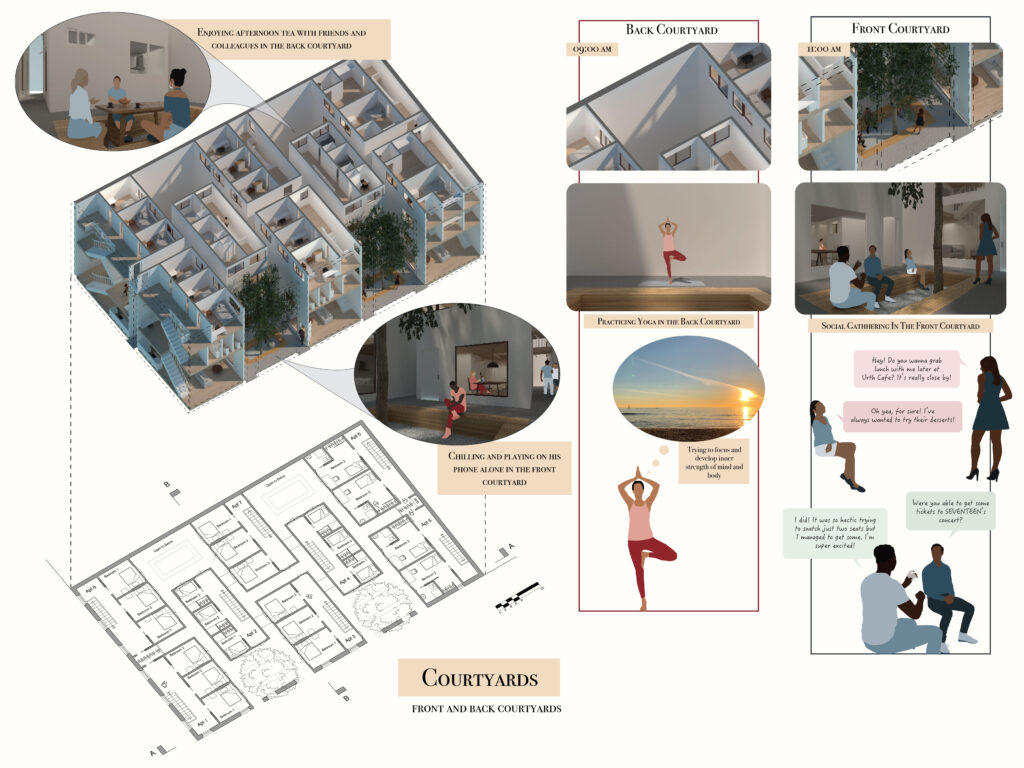
Jean Juan
OTIS College of Art and Design
Professor: Richard Lundquist
The project is an interior architecture redevelopment of the Leland building at 116 E. 5th St, Los Angeles. The design allows for a solitary lifestyle and a communal lifestyle. The building integrates “alone” and “together” into the apartments to create a small community. The integration of alone and together can be seen on the first floor using washitsu — also known as a tatami room. A washitsu usually has Shōji (Japanese sliding door) rather than a hinged door. The tatami room allows individuals to have private space when the doors are closed, and it could also be an open space to socialize and gather when the doors are open. The same concept happens on the mezzanine using hanging barn doors. It allows people to walk to their neighboring offices for collaborative work. And lastly, on the fourth floor, two apartments share an outdoor laundry area where they can converse while doing laundry or drying clothes.
Me, You, Us
Background and Location
The site is the Leland building at 116 E. 5th St, Los Angeles, California. This building was built in 1904 with a total of 19,909 square feet. It is located on the corner of 5th Street and Werdin Place in Downtown Los Angeles. The significant locations nearby are Walt Disney Concert Hall, The Broad, Little Tokyo, Grand Central Market, and many more.
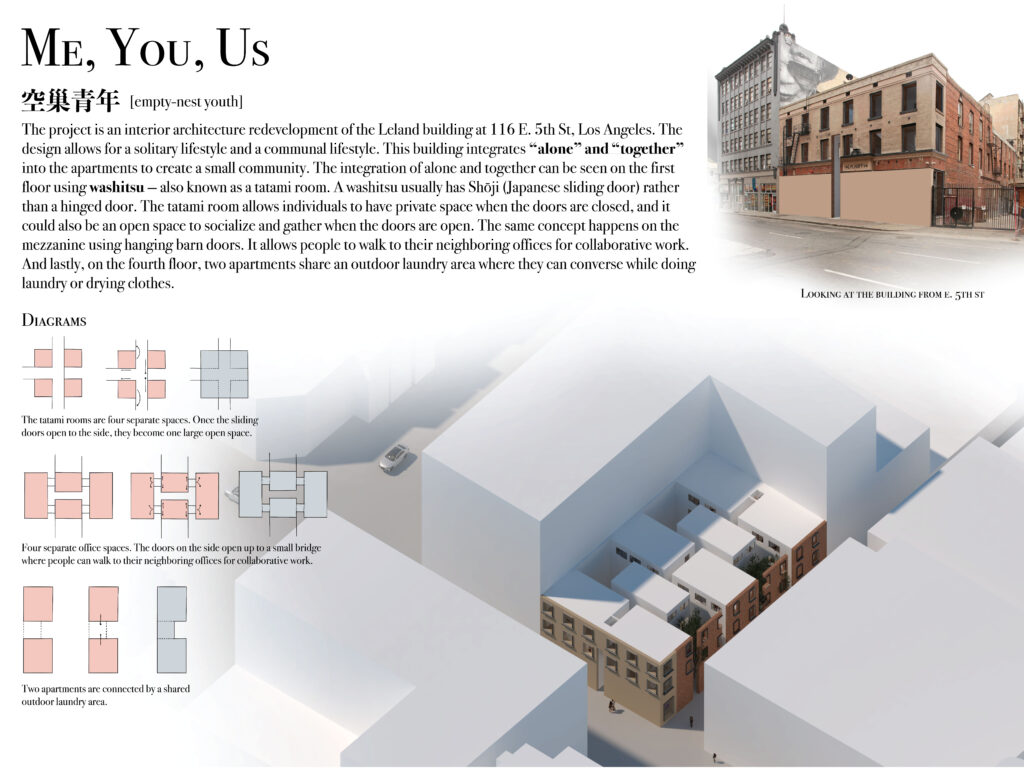
Research
According to Los Angeles Times, the percentages of residents aged 19-34 and unmarried males and females are higher than ever. Los Angeles is an international metropolis home to a diverse architectural landscape, a variety of cultural activities, and a wide range of businesses, including technology, media, entertainment, architecture, hospitality, interior design, fashion, etc. It attracts elite people from all over the world, especially single people to work and start their businesses.

In Going Solo: The Extraordinary Rise and Surprising Appeal of Living Alone, Eric Klinenberg, an American sociologist and N.Y.U sociology professor, talks about the beauty and richness of living alone and how going solo is transforming the American experience. The book states, “Today, more than 50 percent of American adults are single, and 31 million—roughly one out of every seven adults—live alone.” The style of living alone is now a trend, and it will only keep on rising. Living alone for younger professionals is a sign of success and independence, which is why people look forward to this lifestyle.
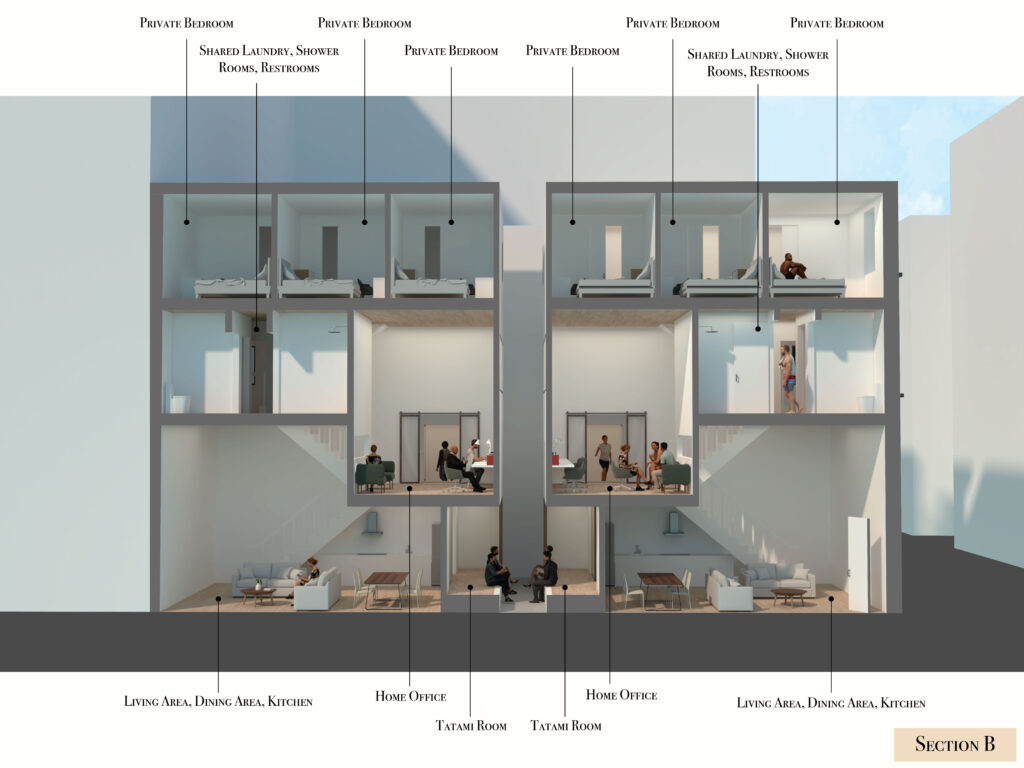
Inspiration
The source of inspiration for this project comes from the concept of living alone. In this new generation, many young adults choose to live alone to enjoy freedom and quietness. They live in big cities and are apart from their parents to pursue their studies and dreams. These young individuals are called 空巢青年, which stands for “empty-nest youth” in China. And this term has become a social phenomenon. Empty-nest youths undertake the pressure of the rapid development of society, which increases social demands to make up for their lack of dependence and loneliness, such as food deliveries, one-person set meals, one-person karaoke, one-person hotpot, etc. This single society and the age of living alone have become a trend. It is a modern lifestyle that young adults look forward to, and these social demands break down the stigma of living alone. Living alone doesn’t mean you’re lonely. On the contrary, individuals who live alone are more consistently socially active.

Concept
My project allows for a solitary lifestyle and a communal lifestyle. The building integrates “alone” and “together” into the apartments to create a small community. The integration of alone and together can be seen on the first floor using washitsu — also known as a tatami room. A washitsu usually has Shōji (Japanese sliding door) rather than a hinged door. The tatami room allows individuals to have private space when the doors are closed, and it could also be an open space to socialize and gather when the doors are open. The same concept happens on the mezzanine using hanging barn doors. It allows people to walk to their neighboring offices for collaborative work. And lastly, on the fourth floor, two apartments share an outdoor laundry area where they can converse while doing laundry or drying clothes.
